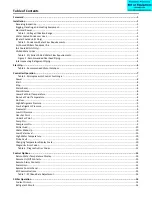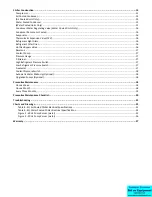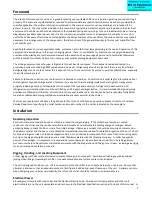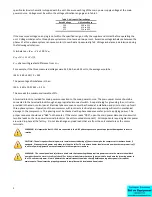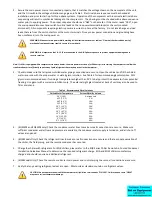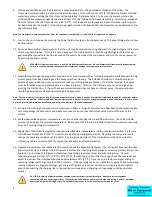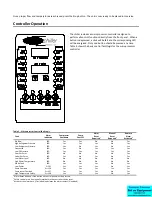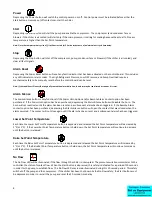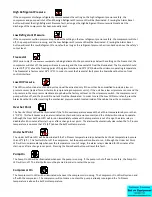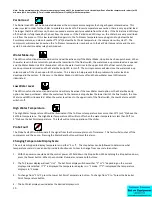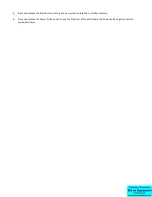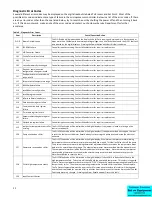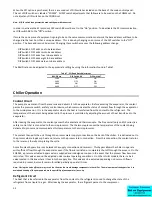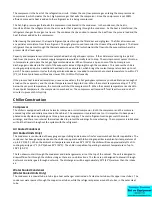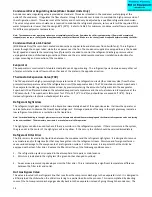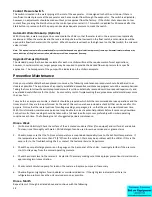
3
Water Cooled Condenser Lines
(Water Cooled Units Only)
The performance of the condenser is dependent on maintaining the proper flow and temperature of water through the
heat exchanger. Insufficient water flow or high condenser water supply temperatures will result in the reduction of cooling
capacity of the chiller. Extreme conditions will eventually result in the chiller shutting down due to high refrigerant
pressure. Performance can be adversely affected if the condenser is allowed to plug up from contaminants in the
condenser water stream. In order to reduce maintenance costs and chiller downtime, a water treatment program is highly
recommended for the condenser cooling water. If any condenser does become plugged, contact our Customer Service
Department for assistance in the proper procedure for cleaning out the condenser.
The standard cooling capacity is based upon 85°F (29°C) condenser cooling water supply. Under normal operating
conditions there will be a 10°F (6°C) rise through the condenser resulting in 95°F (35°C) exiting water temperature from the
condenser. To ensure proper water flow through the condenser, the condenser water pump should be able to handle up to
25 PSI (172 kPa) pressure drop through the condenser. While the design pressure loss is much lower than 25 PSI (172 kPa),
we recommend the pumping system be sized for this loss to ensure there will be sufficient supply pressure to the
condensers. To prevent damage to the condenser or regulating valve, the condenser water pressure should not exceed 150
PSIG (1034 kPa). The condenser water regulating valve controls the condenser water flow. The chiller loading and
condenser water inlet temperature will determine the actual flow. Table 2 shows minimum condenser water flow
requirements for the different size chillers at different supply temperatures under fully loaded conditions.
Table 2 - Condenser Water Flow Requirements
EQ2W02
EQ2W03
GPM (L/min) @ or below 70°F (21°C)
2.2 (8.3)
3 (11.3)
GPM (L/min) @ 75°F (24°C)
3 (11.3)
3.8 (14.3)
GPM (L/min) @ 80°F (27°C)
4.2 (15.9)
5.4 (20.4)
GPM (L/min) @ 85°F (29°C)
6.4 (24.2)
8.2 (31)
GPM (L/min) @ 90°F (32°C)
Call factory
Call factory
The minimum flows are determined using the condenser water regulating valve setting of 210 PSI (1.45 Mpa) for a given
supply temperature. The supply temperature range is from 40°F (4.4°C) to 90°F (32°C). Supply temperatures beyond this
range are not recommended and may lead to improper chiller operation.
Air Cooled Chillers Condenser Air
(Air Cooled Units Only)
In order to accommodate the air-cooled condenser, the chiller must be located in a well-ventilated area. A minimum of
three feet of clearance is recommended at both the condenser air inlet and condenser air discharge. The air cooled chillers
were not designed to have the condenser air discharge ducted. Improper clearance or poor ventilation will reduce the
cooling capacity of the chiller and may cause high refrigerant pressure problems. The condenser air inlet temperature
should be maintained above 50°F (15°C) in order to avoid possible low refrigerant pressure safety trips during start-up.
Chilled Water Lines
All chilled water piping should be adequately insulated to prevent condensation. If water is allowed to condense on the
piping, the state change of the water from gas to liquid will result in a substantial heat load that becomes an additional
burden for the chiller. Standard portable chillers have been designed to provide 50°F (10°C) coolant to the process. Under
normal operating conditions there will be a 10°F (6°C) rise through the process resulting in 60°F (16°C) return coolant
temperature to the chiller.
Table 3 - EQ Series Chilled Water Flow Requirements
Model
Nominal Flow
GPM (L/min)
Pressure Drop
PSI (kPa)
EQ3A01
2.4 (9)
1 (6.89)
EQ2A02
4.8 (18.1)
3 (20.68)
EQ2A03
EQ2W02
EQ2W03
7.2 (27.2)
4.8 (18.1)
7.2 (27.2)
5 (34.47)
3 (20.68)
5 (34.47)
The importance of properly sized piping between the chiller and process cannot be overemphasized. See the ASHRAE
Handbook or other suitable design guide for proper pipe sizing. In general, run full size piping out to the process and then
reduce the pipe size to match the connections on the process equipment. One of the most common causes of


